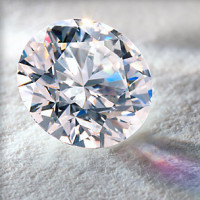Conflict diamonds are diamonds illegally traded to fund conflict in war-torn areas, particularly in central and western Africa. The United Nations (UN) defines conflict diamonds as “…diamonds that originate from areas controlled by forces or factions opposed to legitimate and internationally recognized governments, and are used to fund military action in opposition to those governments, or in contravention of the decisions of the Security Council.” These diamonds are sometimes referred to as “blood diamonds.”
Conflict diamonds captured the world’s attention during the extremely brutal conflict in Sierra Leone in the late 1990s. During this time, it is estimated that conflict diamonds represented approximately 4% of the world’s diamond production. Illicit rough diamonds have also been used by rebels to fund conflicts in Angola, Liberia, Ivory Coast, the Democratic Republic of Congo and the Republic of Congo (also known as Congo Brazzaville).
Today, the flow of conflict diamonds has been reduced to considerably less than 1%.
There are three diamond producing countries that account for this small percentage. Firstly, the Republic of Congo has been suspended from participation in the Kimberley Process owing to areas of non-compliance. Secondly, Liberia and the Ivory Coast are under United Nations Security Council Resolutions to prohibit the extraction and trading of diamonds. Despite both the Republic of Congo and Liberia benefiting from internationally recognized peace agreements, diamonds from these countries may be referred to as “conflict diamonds”.
Text taken from diamondfacts.org
